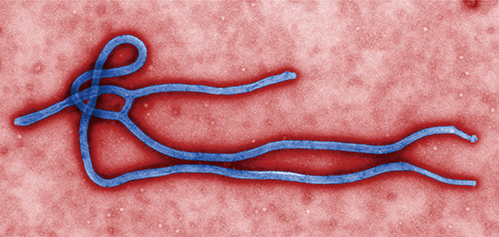Clin Exp Vaccine Res.
2015 Jan;4(1):11-16. 10.7774/cevr.2015.4.1.11.
Progress of vaccine and drug development for Ebola preparedness
- Affiliations
-
- 1Division of Arboviruses, Korea National Institute of Health, Korea Centers for Disease Control and Prevention, Cheongju, Korea. wonja@nih.go.kr
- 2Division of High-risk Pathogen Research, Korea National Institute of Health, Korea Centers for Disease Control and Prevention, Cheongju, Korea.
- 3Division of Bioterrorism Preparedness and Response, Korea Centers for Disease Control and Prevention, Cheongju, Korea.
- KMID: 2049103
- DOI: http://doi.org/10.7774/cevr.2015.4.1.11
Abstract
- Since the first case of Ebola virus disease (EVD) in Guinea was reported in March 2014 by World Health Organization (WHO), the outbreak has continued through the year and the total number of 19,065 patients was reported as the confirmed or suspected in the EVD-affected countries. Among the cases, 7,388 patients were reported death by 19 December. Currently, available therapeutics to treat the infected patients or vaccines to prevent people from infection is not developed yet while viral diagnostic methods were already developed and firmly established in a lot of countries as a first step for the preparedness of Ebola outbreak. Some potential therapeutic materials including ZMapp were supplied and the treated people got over the EVD. Several candidates of vaccines also were investigated their efficacy in animal models by National Institute of Health (NIH) and Department of Defense, and they are processing of clinical tests in West Africa aiming to finish the development by the 2015. Vaccine and therapeutic development is essential to stop the EVD outbreak in West Africa, also to protect the world from the risk which can be generated by potential spread of Ebola virus.
MeSH Terms
Figure
Reference
-
1. Centers for Disease Control and Prevention. 2014 Ebola outbreak in West Africa [Internet]. Atlanta: enters for Disease Control and Prevention;2014. 2014 Dec 1. Available from: http://www.cdc.gov/vhf/ebola/outbreaks/2014-west africa/.2. Pigott DC. Hemorrhagic fever viruses. Crit Care Clin. 2005; 21:765–783.
Article3. Baize S, Pannetier D, Oestereich L, et al. Emergence of Zaire Ebola virus disease in Guinea. N Engl J Med. 2014; 371:1418–1425.
Article4. Wauquier N, Becquart P, Padilla C, Baize S, Leroy EM. Human fatal zaire ebola virus infection is associated with an aberrant innate immunity and with massive lymphocyte apoptosis. PLoS Negl Trop Dis. 2010; 4:e837.
Article5. Baron RC, McCormick JB, Zubeir OA. Ebola virus disease in southern Sudan: hospital dissemination and intrafamilial spread. Bull World Health Organ. 1983; 61:997–1003.6. Bwaka MA, Bonnet MJ, Calain P, et al. Ebola hemorrhagic fever in Kikwit, Democratic Republic of the Congo: clinical observations in 103 patients. J Infect Dis. 1999; 179:Suppl 1. S1–S7.
Article7. Qiu X, Wong G, Audet J, et al. Reversion of advanced Ebola virus disease in nonhuman primates with ZMapp. Nature. 2014; 514:47–53.
Article8. Olinger GG Jr, Pettitt J, Kim D, et al. Delayed treatment of Ebola virus infection with plant-derived monoclonal antibodies provides protection in rhesus macaques. Proc Natl Acad Sci U S A. 2012; 109:18030–18035.
Article9. Geisbert TW, Pushko P, Anderson K, Smith J, Davis KJ, Jahrling PB. Evaluation in nonhuman primates of vaccines against Ebola virus. Emerg Infect Dis. 2002; 8:503–507.
Article10. Geisbert TW, Jahrling PB. Towards a vaccine against Ebola virus. Expert Rev Vaccines. 2003; 2:777–789.
Article11. Vanderzanden L, Bray M, Fuller D, et al. DNA vaccines expressing either the GP or NP genes of Ebola virus protect mice from lethal challenge. Virology. 1998; 246:134–144.
Article12. Hoenen T, Groseth A, Feldmann H. Current ebola vaccines. Expert Opin Biol Ther. 2012; 12:859–872.
Article13. Takada A. Filovirus tropism: cellular molecules for viral entry. Front Microbiol. 2012; 3:34.
Article14. Sullivan NJ, Martin JE, Graham BS, Nabel GJ. Correlates of protective immunity for Ebola vaccines: implications for regulatory approval by the animal rule. Nat Rev Microbiol. 2009; 7:393–400.
Article15. Sullivan N, Yang ZY, Nabel GJ. Ebola virus pathogenesis: implications for vaccines and therapies. J Virol. 2003; 77:9733–9737.
Article16. Sullivan NJ, Geisbert TW, Geisbert JB, et al. Accelerated vaccination for Ebola virus haemorrhagic fever in non-human primates. Nature. 2003; 424:681–684.
Article17. Sullivan NJ, Sanchez A, Rollin PE, Yang ZY, Nabel GJ. Development of a preventive vaccine for Ebola virus infection in primates. Nature. 2000; 408:605–609.
Article18. Marzi A, Feldmann H, Geisbert TW, Falzarano D. Vesicular stomatitis virus-based vaccines for prophylaxis and treatment of filovirus infections. J Bioterror Biodef. 2011; S1:2157-2526-S1-004.
Article19. Falzarano D, Geisbert TW, Feldmann H. Progress in filovirus vaccine development: evaluating the potential for clinical use. Expert Rev Vaccines. 2011; 10:63–77.
Article20. Warfield KL, Goetzmann JE, Biggins JE, et al. Vaccinating captive chimpanzees to save wild chimpanzees. Proc Natl Acad Sci U S A. 2014; 111:8873–8876.
Article21. Geisbert TW, Feldmann H. Recombinant vesicular stomatitis virus-based vaccines against Ebola and Marburg virus infections. J Infect Dis. 2011; 204:Suppl 3. S1075–S1081.
Article
- Full Text Links
- Actions
-
Cited
- CITED
-
- Close
- Share
- Similar articles
-
- Ebola Hemorrhagic Fever and the Current State of Vaccine Development
- Ebola outbreak in Western Africa 2014: what is going on with Ebola virus?
- What do we really fear? The epidemiological characteristics of Ebola and our preparedness
- Preparedness for Prevention of Ebola Virus Disease
- Ebola, fear and preparedness


